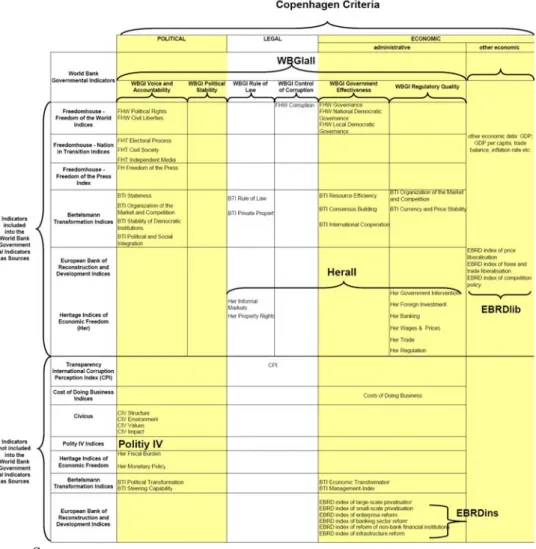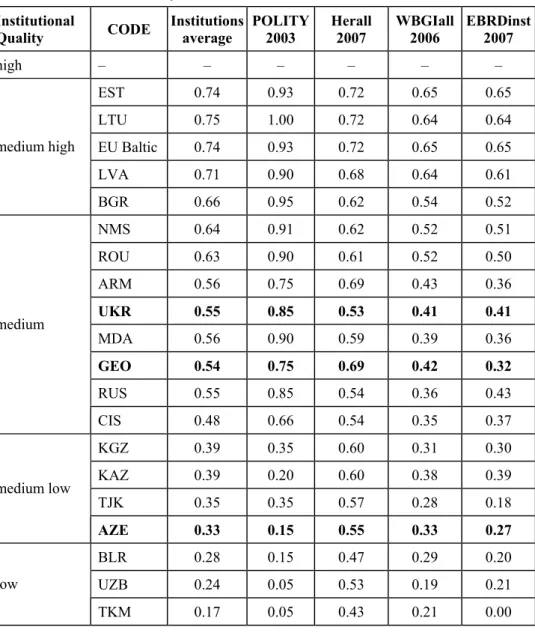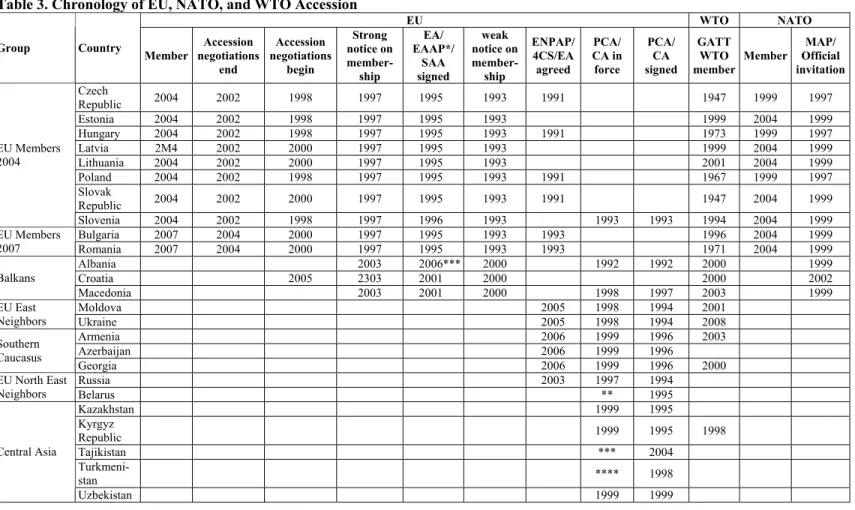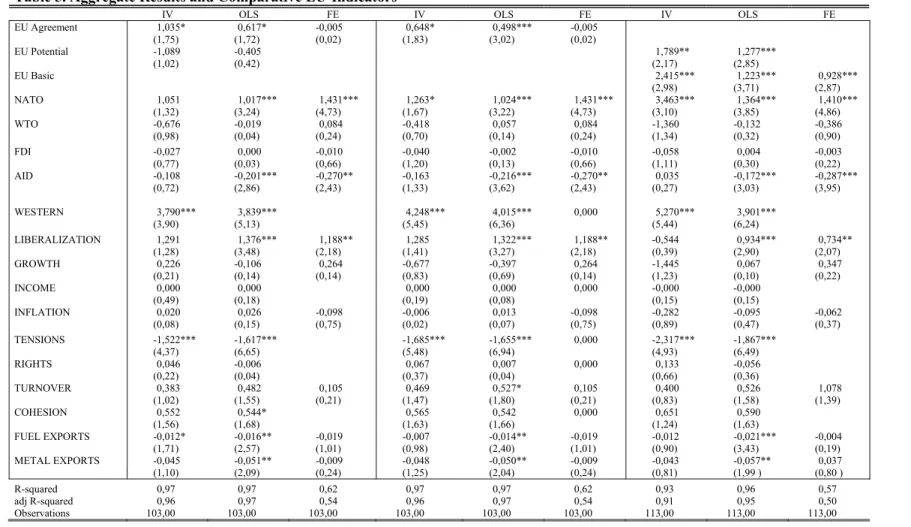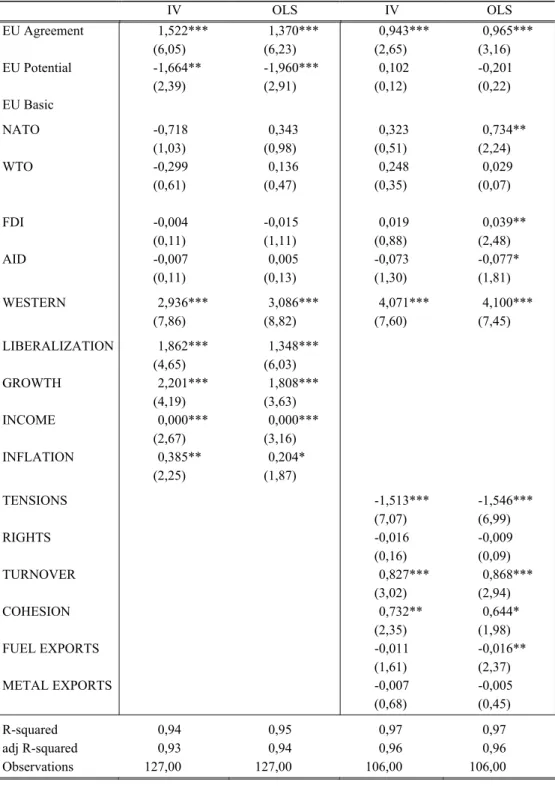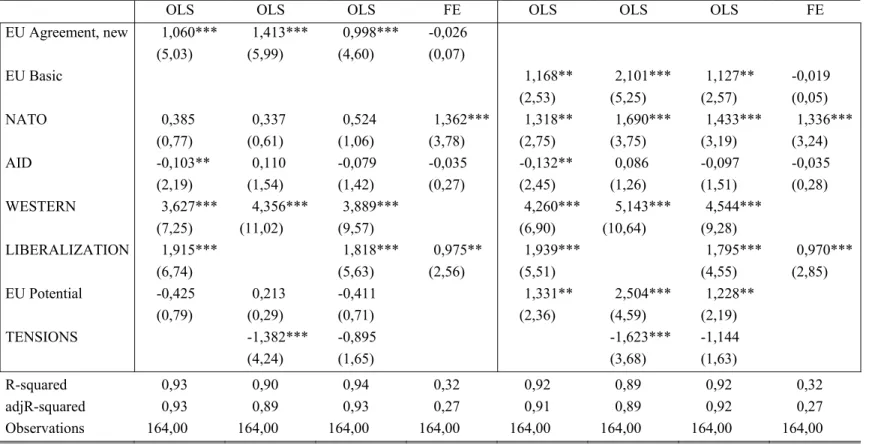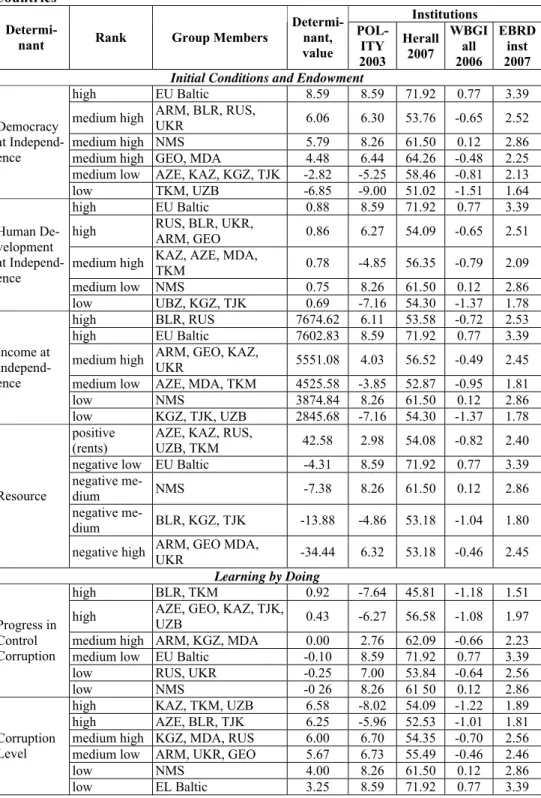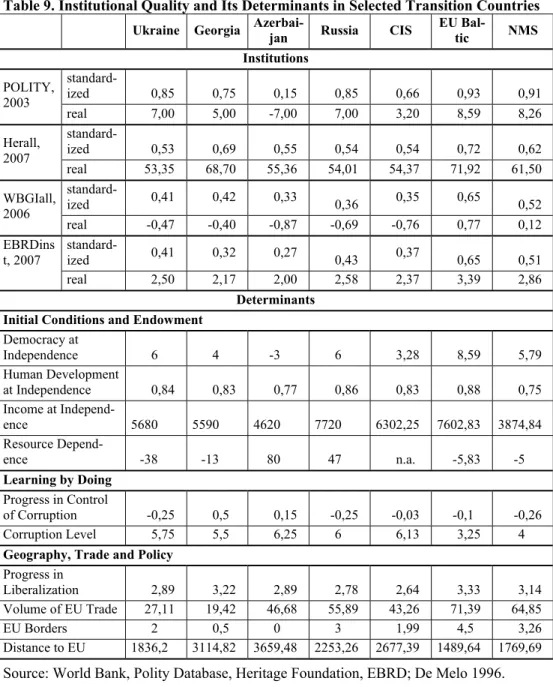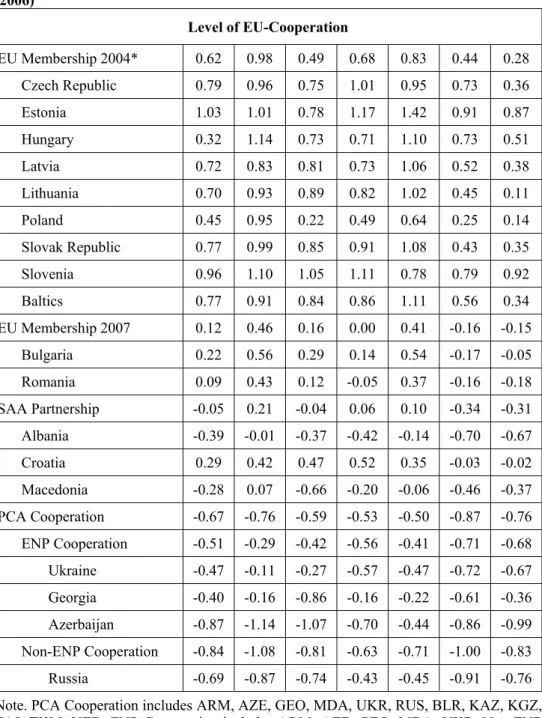The study summarizes the results of the Work Package 10 on "The priority areas of institutional harmonization and the "institutional gap"" carried out by the Kiel Institute for the World Economy. The empirical analysis of the determinants of institutional development in transition countries as well as the qualitative country studies summarized in this publication allow for some optimism about a potential impact of the EU on institution building and governance quality in CIS countries. We found that both basic EU cooperation agreements as well as the start of the membership process had a positive influence on institutional development.
We have chosen these countries as they represent the most enthusiastic (Georgia, Ukraine) and the most reluctant (Azerbaijan) ENP participants. In Section C, we provide a very brief overview of our analytical framework and the results of the qualitative studies.
Introduction ─ Institutional Development in CIS Countries
First, we analyzed which of the individual indicators are included in or excluded from the WBGI. We believe that this choice gives us the opportunity to map the institutional development in the CIS countries quite well. However, the differences in rankings could only be interpreted when determinants of institutional development were integrated, which can be reflected differently in the four indicators of institutions.
An estimate of the income fragility for a country is derived by the vertical distance between the actual income estimate for one of the CIS countries and the "best fit" estimate according to the governance level with respect to the trend line drawn for correlation between income and governance in the EU. At the same time, the trend line, calculated on the basis of data for the EU-27, actually also represents an appropriate average for CIS countries.
External vs. Internal Drivers of Institutional Change in Transition
- Introduction
- External and Internal Drivers of Institutional Change
- The Empirical Model
- Empirical Results
- Summary and Policy Conclusions
This is different for the EU, but also for NATO and the WTO (see Table 3 for the chronology of membership). Regarding the EU's influence on institutional change, there seems to be little doubt that membership matters. In contrast, only a few studies analyze the impact of the EU on institutional changes through agreements under the perspective of membership.
Di Tommaso, Raiser and Weeks (2007) confirm the positive impact of basic agreements between the EU and countries in transition, which are open to all countries in transition. Four measures on organisation, resources, security measures and compatibility – like the acquis in the case of the EU – look rather at the potential of (military) cooperation between the accession country and NATO. The EU Basic variable is similar to the EU variable used by Di Tommaso, Raiser, and Weeks (2007).
Starting with the full model presented in Table 5, a first important result is that the EU variables show the expected signs and are significant in all versions of the model, at least in the POLS estimates. As can be seen, our alternative specification of the EU impact shows that the EU potential dummy is significant in the case of inclusion of EU Basic variable tested in Di Tommaso, Raiser and Weeks (2007). This implies that a basic relationship with the EU, as shown by the importance of the EU Basic variable, is positive for institutional development.
At the same time and in terms of geography, proximity to the EU in terms of distance and potential membership has an additional advantage. It seems important to note the different effects of the EU and NATO variables. Controlling for potential endogeneity issues, the significance of the negative effect shown in the POLS regressions.
In the last step, we deviated from the full model by presenting a reduced model which has only variables that functioned in the full model either in the IV or in the fixed effects specification and independent of the EU variable included . Overall, our models confirm a positive impact of the EU on institutional change in European countries in transition.
Neighborhood Europeanization: Institutional Change under Weak
Mapping Institutional Development in the CIS: Comparative Statistics
It is therefore to be expected that country groups with better conditions according to the determinants will show higher values of the standardized indicators on institutions shown in the columns on the right. A first group consists of the EU countries and the fuel-producing and exporting countries, including Russia. Here too, a comparison of CIS and EU countries is almost impossible on the basis of the WBGI.
This may be due to a bias of the EBRDinst index in favor of nearby countries. As can be deduced from Table 9, these similarities and differences are reflected by the classification of the countries in relation to the determinants of institutional development. The other three indicators of institutional development show a different picture regarding the relative position of the four countries.
This corresponds to the categorization of the two countries with regard to the indicator on Learning by Doing as well as on some indicators in the two other categories of determinants (Democracy at Independence, Liberalization, Borders and Distance). Azerbaijan is again an exception with a continuous decline of the Polity IV indicator while the economic indicators and the WBGI indicator, the latter including economic aspects, have improved. The external impulse of the ENP to improve the governance quality is not working for Azerbaijan.
Secondly, the optimism for the construction of economic institutions must be qualified due to the possible biases of the EBRD indicator - due to inclusion-. Ukraine and Georgia, but recently at least some of the indicators show a stagnation or backwardness. Whether these developments are due to any involvement or non-involvement of the EU – as supported by the comparison of country groups above – is not so clear and needs to be revealed by country studies.
Comparative Country Studies ─ Ukraine, Georgia, and Azerbaijan
Both orange and blue-white political groups strive for close cooperation with the EU. Remarkably, there are no opponents of EU integration among domestic actors, but also no active actions on the part of its proponents. In the wake of enlargement, the EU is seeking legal harmonization to secure its external borders.
In practice, the main objective was to obtain the support of the EU's neighbors in minimizing the risks associated with various types of cross-border crime that threaten the stability and security of the EU. The peaceful resolution of Georgia's internal conflicts (the Georgian-Abkhazian conflict) is a priority area in EU-Georgia relations. Despite the fact that until today, the EU has avoided any responsibility for the ethno-political conflicts - the main problem of the entire South Caucasus region.
The EU has traditionally considered conflict prevention work to be more effective than post-conflict management. This will only be possible when Russia sees the EU not as a competitor in the Black Sea region, but as a cooperative partner. However, their claims have so far gone unheeded, leading to growing frustration and growing reluctance to further cooperate with the EU on some issues and to further support individual EU activities in conflict regions.
As far as domestic political reforms are concerned, Azerbaijan belongs to the group of passive partners and seems reluctant to comply with the EU's demands for democratization. Socialization and the intended "learning process" in Azerbaijan will not be achieved by the hypocritical behavior of the EU and other international actors. The general emphasis in the action plan needs to be interpreted from a distance and can be seen as a product "of the EU's desire to address its own internal security problems related to cross-border crime and border management" (Occipinti 2007: 120).
Summary and Policy Conclusions – Hypotheses on ENP Europeanization 40
Since accepting the formal commitments to democracy and the rule of law within the framework of Council of Europe (CoE) accession in 2001, Azerbaijan has shown no significant reform ambitions. However, due to the lack of sanctions and rewards, elite behavior will not be changed. In relation to Ukraine and Georgia, in the case of Azerbaijan, energy policy is of greatest importance within ENP mechanisms.
Here, the implementation of the ENP remains half-hearted by the ruling elites and is based on cost-benefit calculations. Access to all four freedoms of the EU's Common Economic Space is even more of a pipe dream. If we consider access to the internal market today as the most powerful incentive of the ENP, we must remember that there is currently a sharp segregation between ENP countries: countries with a realistic perspective of internal market integration (Ukraine, Moldova ) and those without (all other ENP participants).
This is the main difference with the EU enlargement process, because the accession country brought with it a fairly clear (and similarly current) perspective on the ultimate incentive – membership. Weak conflict resolution: Without analysis of the individual challenges in each of the ENP states, it is not possible to understand the prospects for Europeanization in a thorough way. Energy relations and the interest of the EU: As mentioned above, we cannot properly understand the EU's strategy in the ENP without taking into account the clear energy interests that the EU has in Azerbaijan and Ukraine.
Azerbaijan is one target country of the EU's ambition to weaken energy dependence on Russia, while Ukraine is the main transit country for Russian energy supplied to the EU. In: Richard Auty and Indra de Soysa (eds.) Energy, Wealth and Governance in the Caucasus and Central Asia, Routledge, New York. Institutions, governance and trade – an empirical examination of the links in the light of the proposed ACP-EU Economic Partnership Agreements.
Initial conditions, external anchors and determinants of institutional reform in transition economies. National Bureau of Economic Research (NBER). 2006) After Enlargement: Institutional Achievements and Perspectives in the New Member States.
